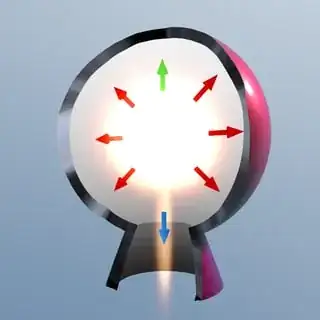The thrust of a rocket engine is a force caused by a net pressure force acting on the entire contraption. The change in momentum of the combustion gases moving from the combustion chamber to the nozzle exit is only the physical means by which this relevant pressure difference is maintained. Many undergraduates don't seem to understand these basic issues, and some of these misunderstandings are reflected in some of the answers here.
To understand this, draw a closed control volume that outlines the entire inside of the combustion chamber, the inside of the nozzle, and the exit plane of the nozzle. In the simplest case, take a nozzle that ends at the throat, with no divergent section, and with a very short convergent section. In this case, the exit plane of the nozzle will be at atmospheric pressure and the exit Mach number will be unity.
Assuming the static pressure within the combustion chamber to be uniform, all pressure forces acting inside the control volume essentially cancel, except for the atmospheric pressure forces acting on the exit plane and the combustion chamber pressure forces acting on the area projected by the throat on the front end of the combustion chamber.
The net force on the control volume is thus equal to A*(Pc - Pa), where A is the throat area, Pc combustion chamber static pressure, and Pa atmospheric pressure. With such a state of affairs, it's easy to see that it's pressure forces that move the rocket. To say that the change of momentum of the combustion gases moves the rocket is not incorrect, but without understanding the role of pressure forces, one cannot truly have a grasp on how a rocket is propelled.
We can now extend this reasoning to the case that has the usual divergent nozzle section. In doing so, we understand that the advantage of such a section is due to the fact that atmospheric pressure can now act on the nozzle exit plane with the existence of a much smaller throat area. The smaller throat area produces much less mass flow of combustion products, and so, a convergent/divergent nozzle allows a much more efficient use of combustion gas mass flow, in order to allow atmospheric pressure to act on the exit plane of the nozzle. Without the divergent section, a much larger mass flow would be needed to produce the same net pressure force acting on the rocket.
It's important to understand Newton's laws and the role of momentum change in regard to rocket engines, and the role of pressure forces is inexorably associated with the momentum change. However, because this law is so basic and easy to apply, some people seem to truncate their basic understanding of how a rocket engine works.
